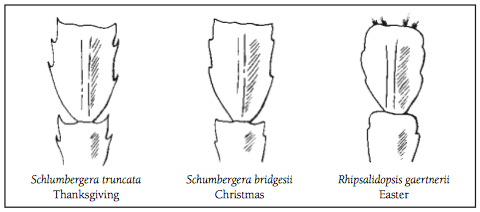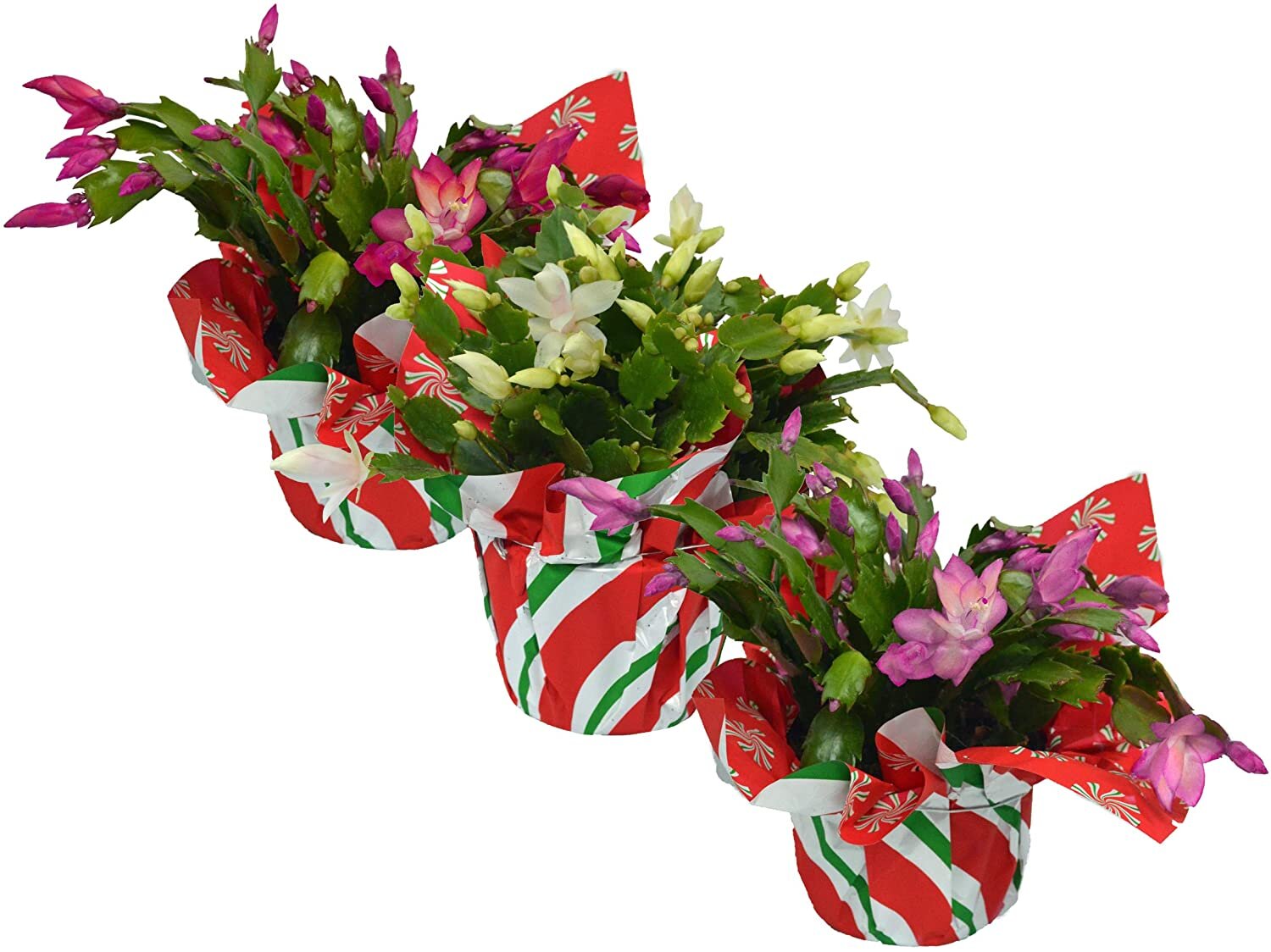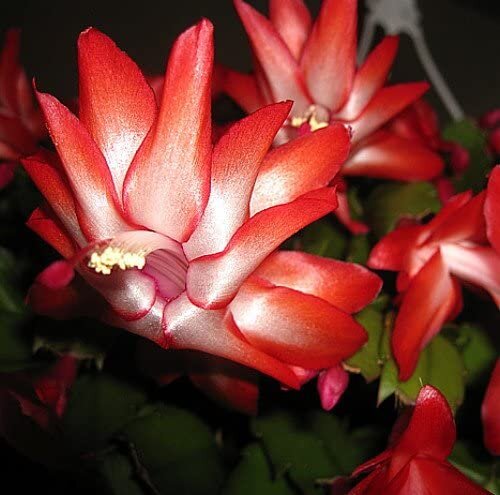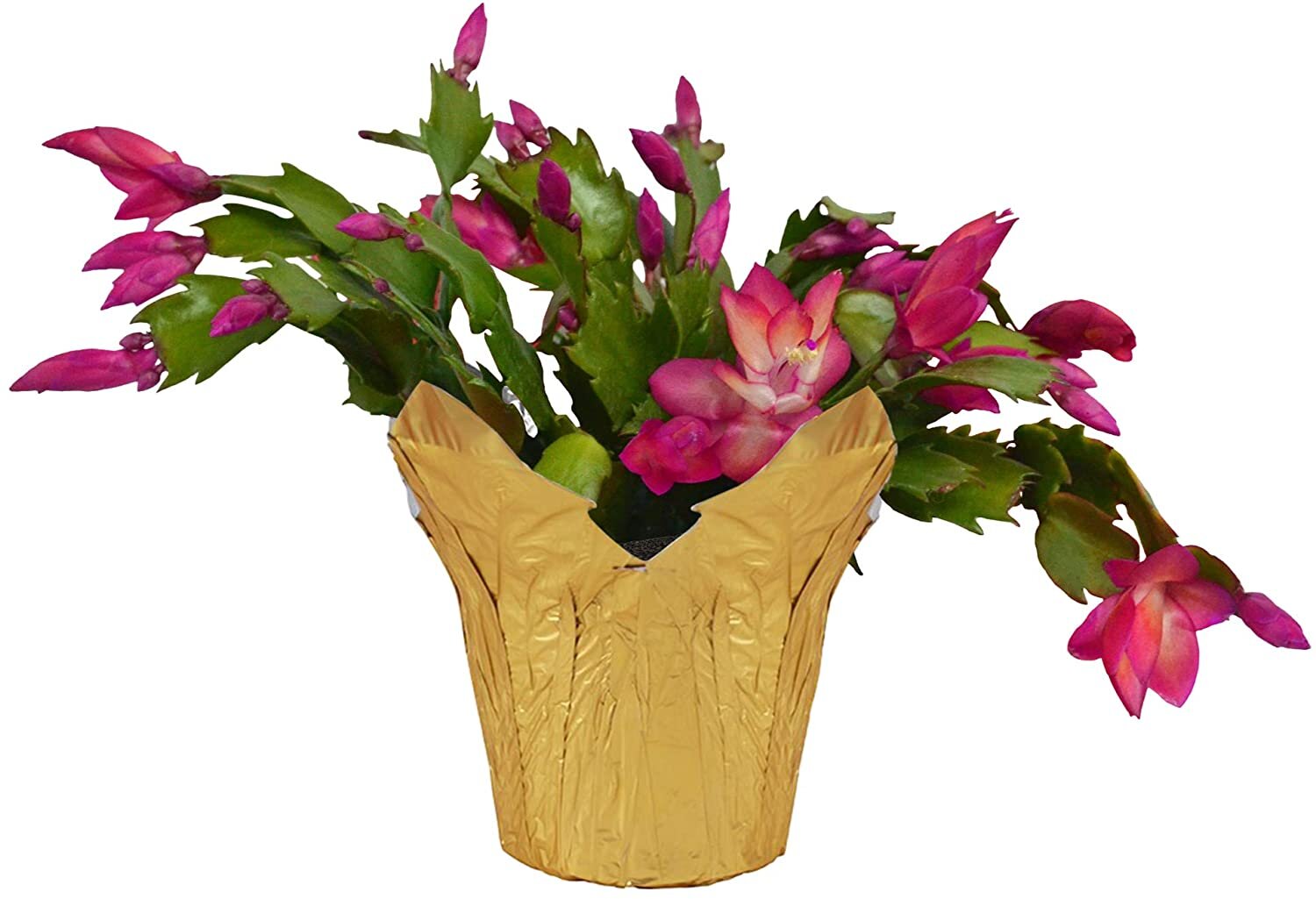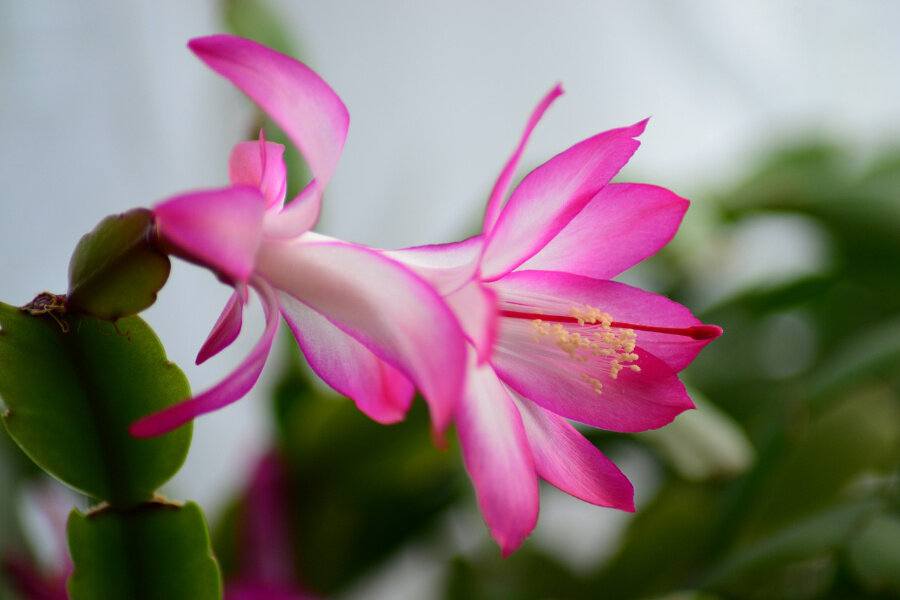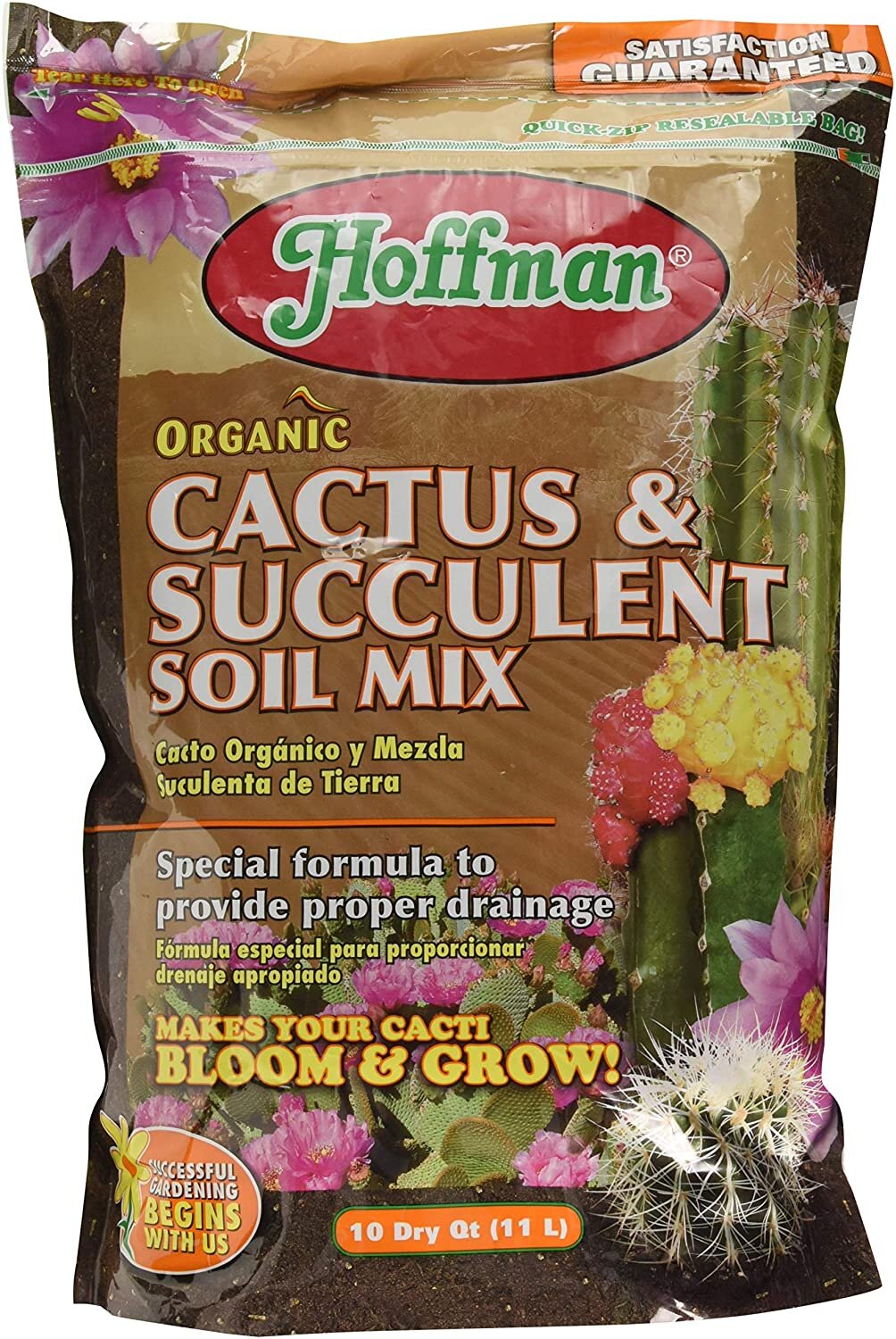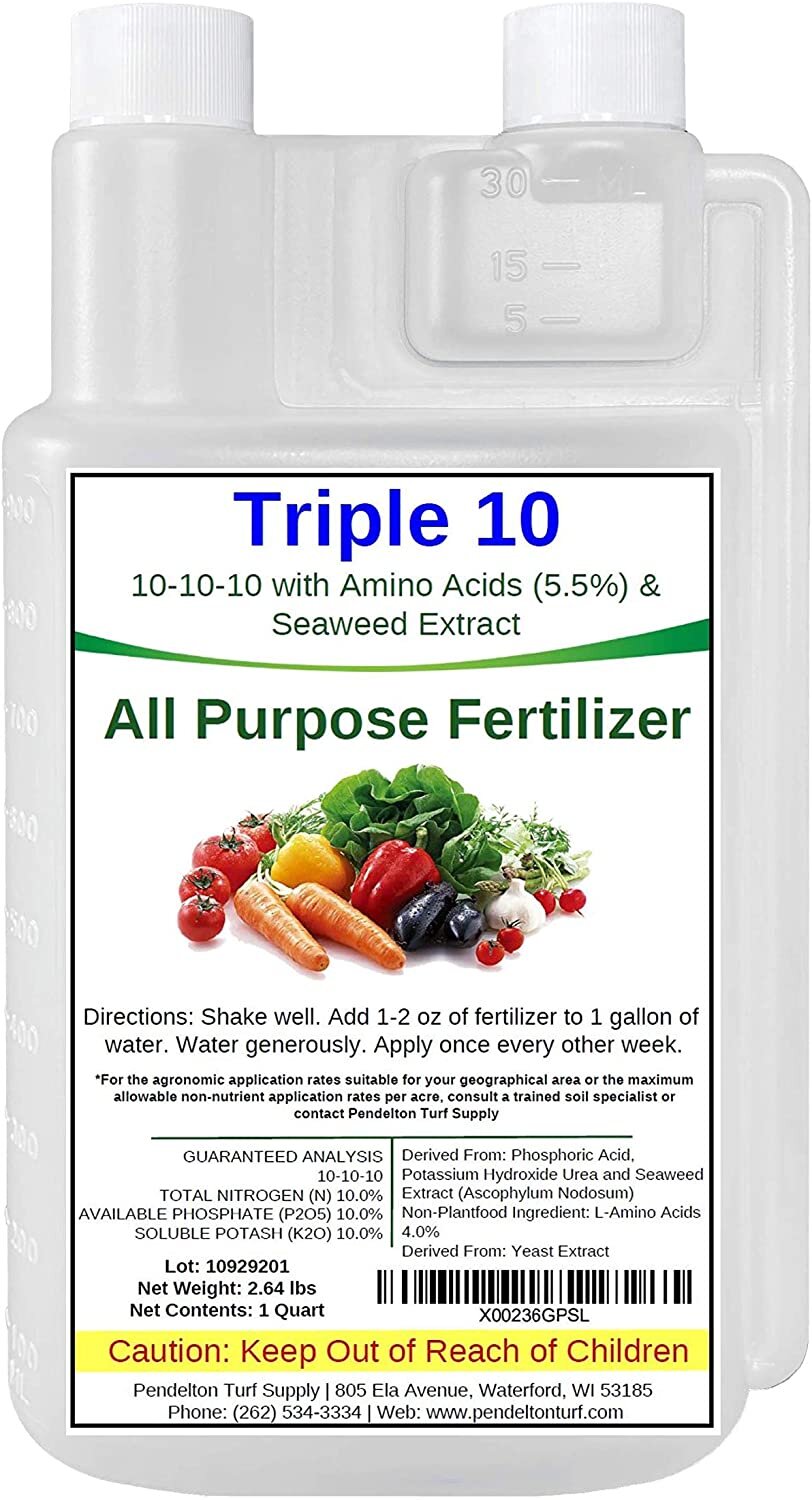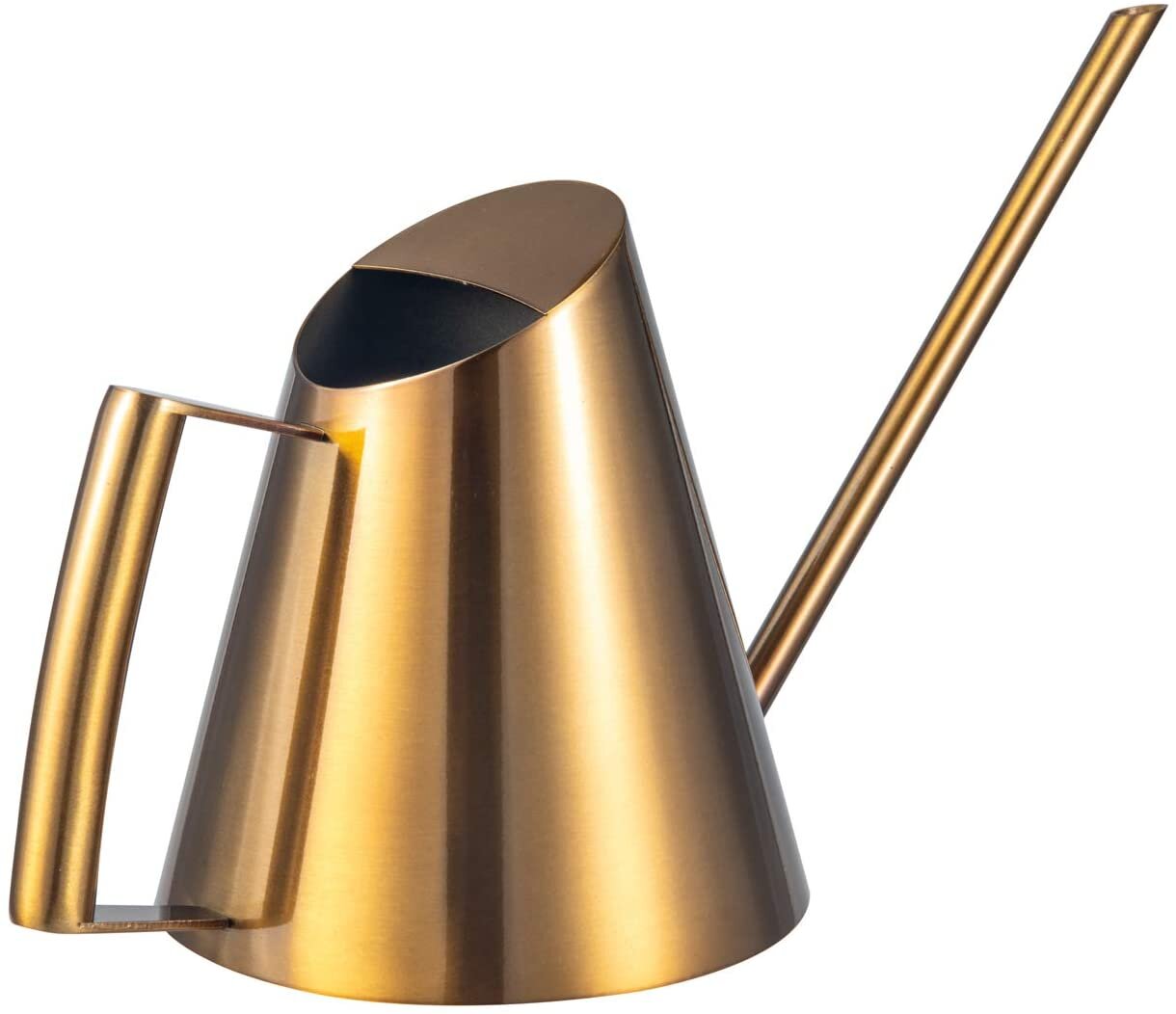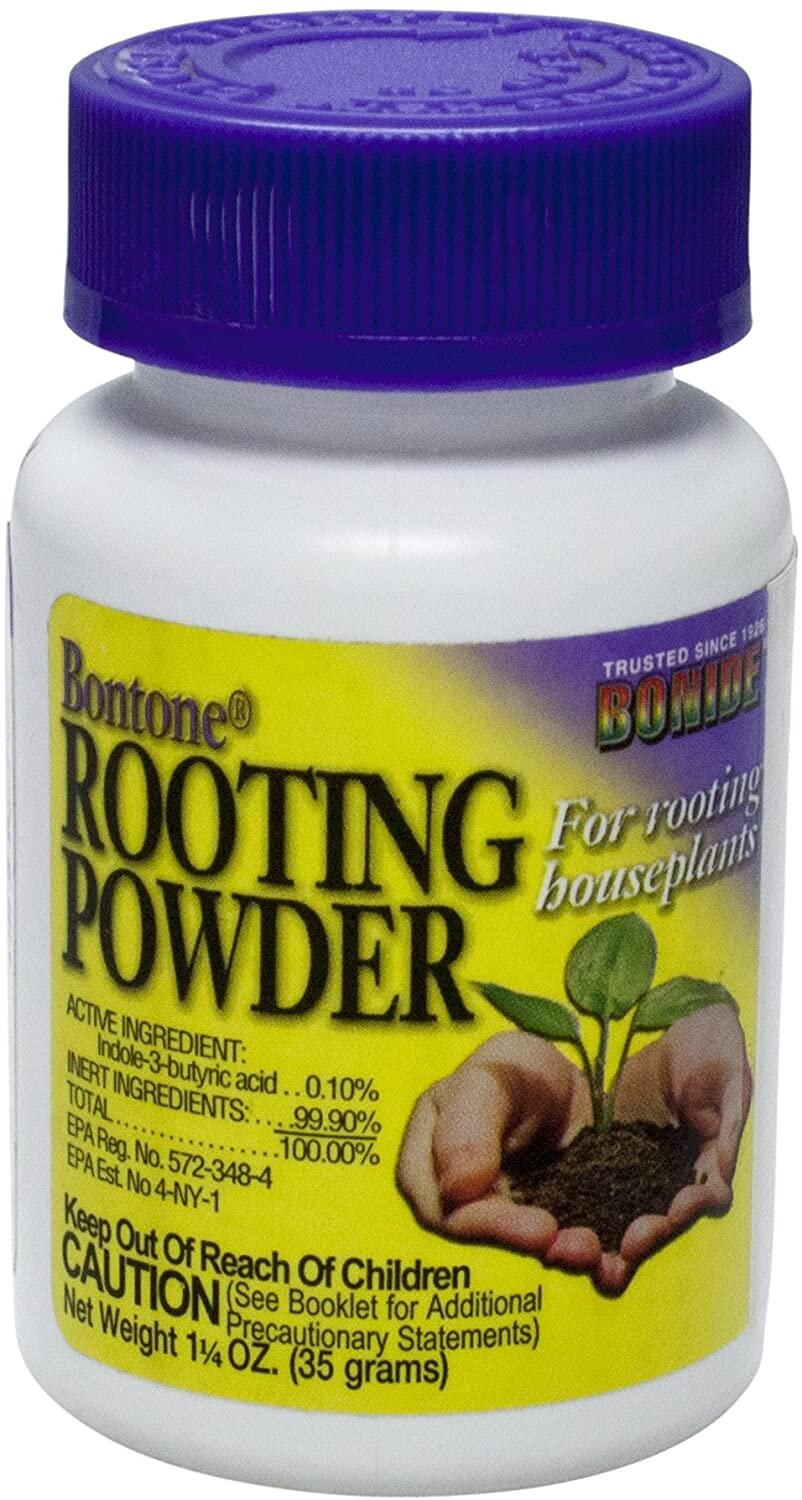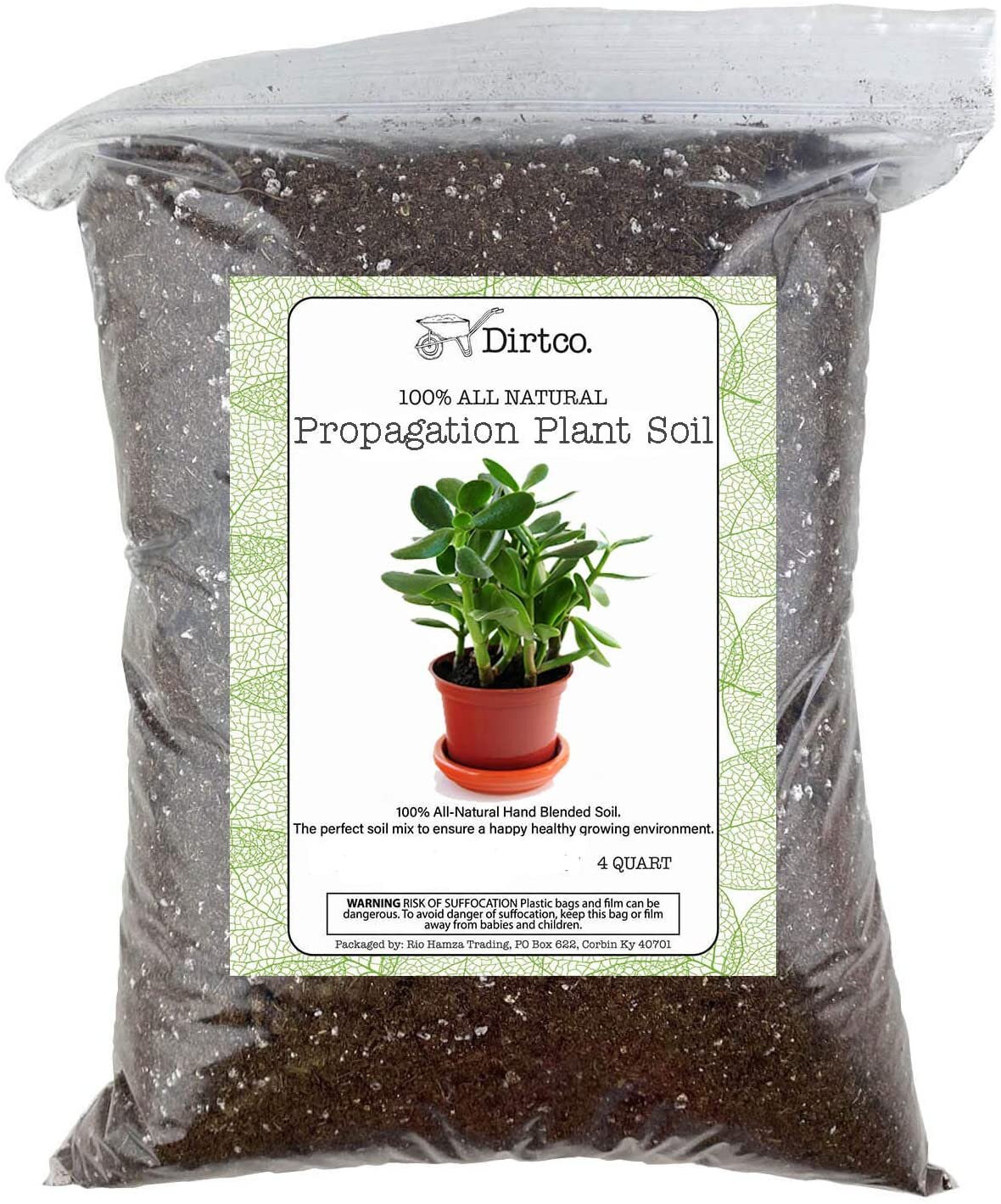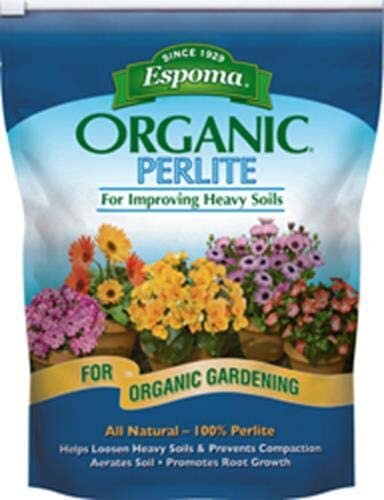Christmas Cactus Flowering and Care [Strategy for Blooms 2x Per Year]
During the holiday season, many look forward to Christmas trees or poinsettias, but some of us also anticipate the spectacular blooms of Christmas cactus - a favorite indoor succulent ! (You know who you are!) Read on to learn about these easy-to-grow winter-blooming succulent beauties.
Christmas cacti types
Christmas cacti vs. “regular” cacti
Holiday cactus description
Christmas cactus care
Make your Christmas cactus flower!
Propagating holiday cactus
[This post contains affiliate links. Click here to read my full disclosure.]
Types of Holiday cactus
So what exactly is a Christmas cactus? A “true” Christmas cactus is Schlumbergera x buckleyi, a hybrid of Schlumbergera truncata and Schlumbergera russelliana bred about 150 years ago in England.
You’ll come across different botanical names as even the nursery trade doesn’t stick to just Schlumbergera, but it’s considered the “one” as it blooms later than it’s cousins. (My post images aren’t all Schlumbergera either.) No matter what’s on the plant tag though, they’re all related.
Because of this, you can keep the blooming indoor succulent holiday celebrations going for much of the year!
Christmas cactus’s relatives include the Thanksgiving cactus (Schlumbergera truncata) and Easter cactus (Rhipsalidopsis gaertnerrii). Often, they’re labeled as Zygocactus, which has become a generic “catch-all” name for any Holiday cacti.
If you’re curious to know which kind you have, check out this illustration:
Wondering which type of Holiday cactus you have? This leaf anatomy illustration helps. Iowa State University Extension
All holiday cacti are similar except for bloom times. They're all native to coastal mountains of Brazil where they grow in shady, humid forests.
Frabby fact - In Brazil, they’re called Flor de Maio (May flower), since they flower at that time in the Southern Hemisphere. (This is a nicer visual than the toilet swirling the opposite direction for the Southern Hemisphere, am I right?)
They are epiphytes which are non-parasitic plants that grow on trees and rocks and get their nourishment through the atmosphere - water, debris, and air. Air plants are also beautiful examples of epiphytes.
SHOP THE POST
Christmas cacti vs. “regular” cacti
If your idea of a cactus is a giant Saguaro, standing spiny and sentinel in the desert, you may be surprised to learn that there are many members of the Cactaceae family that are soft and spineless, tropical, and need humidity and regular water.
Holiday cactus description
Christmas cactus have flat, green succulent stem segments called phylloclades. They spill downward over the container edges in pendant chains and can grow up to 3’ long.
Christmas cactus bloom from the ends of their stems from about December to February. Flower colors include white, pink, yellow, orange, red or purple and can measure up to 3 inches long with several tiers of petals giving them a “flower within a flower” appearance.
When ripe, the fruit is reddish and pear-shaped and the seeds are shiny black. Birds like to eat the fruit and then distribute the seeds in their droppings.
Christmas cactus care
Here are tips for success with your Christmas cactus and what you’ll need:
SHOP THE POST
Light & Air
Christmas cacti like bright indirect light; they don’t like direct sunlight. So a south or west-facing window will likely burn the segments, especially during the fall or winter when the sun sits lower and shines in more directly than during spring or summer. Either set it back from the window or filter the light if it’s a bright room.
Their native habitat is shady, cool, humid forests in Brazil, so they like humidity. Don’t keep them near heater vents.
Watering
Christmas cactus are succulents after all, and they're epiphytes, meaning they naturally live on trees or rocks rather than in the soil. So keep them in a well draining soil that's high in organic matter, and err on the side of underwatering to prevent root rot. This means water them thoroughly, but then allow them to mostly dry out in-between waterings.
Soil
Christmas cactus like being pot-bound. This means keeping it in a smallish pot for as long as possible. (Orchids, Hoyas, and many other epiphytes and succulents prefer being pot-bound as well.)
If you’re re-potting your Christmas cactus, use a soil that’s high in organic matter and well-draining, and a pH of 5.7-6.5 if you happen to have a means of checking that. (I sure don’t.)
Fertilization
Holiday cacti don’t need a lot of fertilizer. (Most epiphytes are light feeders.) A balanced NPK fertilizer with micronutrients once a month diluted to half strength will keep it in good shape.
Disease/Pests
Christmas cacti don't have a lot of pest or disease problems as indoor plants. They are relatively disease free unless over-watered. Again, don't over-water to prevent soil-borne disease and root rot.
Fungus gnats are the most common pest. The larvae feed on root and stem tissue which can promote disease. Azadirachtin is the active ingredient in Neem oil and is extracted from Neem tree seeds, which is effective on fungus gnats and many other pests.
Christmas cactus troubleshooting
If the plant turns reddish in color, it is an indication of sunburn, lack of phosphorus, or lack of water.
How to get your Christmas cactus to flower
You probably bought it when it was flowering, but what about next time? Don't worry! If your Christmas cactus doesn’t just re-bloom on it’s own, it’s actually pretty easy to get them to flower.
Christmas cactus are thermo-photoperiodic plants. This means blooming is triggered by both temperature and day length. Specifically, it needs extended periods of darkness before it can bloom under most indoor conditions.
So at temperatures of about 60 to 75 degrees (most homes) and under natural daylight conditions, they will naturally start to produce flower buds in late September-October when the nights get longer, and will flower November to December. 12.5 to 14 hours is the critical night time length.
Christmas cactus bloom strategy
Do you want blooms for Christmas or Thanksgiving? If you don’t want to leave it to chance, you can determine when it will bloom.
Flower buds will form if one of the following conditions is met:
Cool night temperatures between 50 to 59 degrees Fahrenheit. They're native to coastal mountains of Brazil, so they like the cooler temperatures and will set buds in this range whether they have reduced daylight or not.
Temps between 60 and 75 degrees (most homes) - 12.5 - 14 hours of uninterrupted darkness on a daily basis for at least 3 weeks.
Temperatures above 70 degrees - 15 hours of darkness on a daily basis for at least 3 weeks.
If kept above 90F, they may drop their flower buds.
Water as normal
Keeping your cactus near a window can provide cooler night time temps. (Make sure it isn’t too bright though as discussed above in the Light section.)
Keep it away from heater vents. They like humidity and dislike dry heat.
If you don’t think it’s getting enough darkness, cover it with a paper bag for 12 or so hours each day. Putting it in a dark closet makes sense, except I’ve read they don’t like being moved around and sometimes drop flower buds because of it.
Christmas cactus will remain in flower for four to six weeks, with each flower lasting six to nine days. That makes Christmas cactus one of the best deals in the floral department, am I right?
After the plant has flowered, prune back each stem by pinching off enough sections to achieve a uniform habit.
Easter 2021 Re-bloom Update: My cactus produced a bonus bloom at Easter! Since it finished flowering over the winter holidays, I had been keeping it in a bathroom that isn’t really used during the evenings and is quite chilly (poor insulation). This meant it’s environment met condition #2 from above:
Temps between 60 and 75 degrees (most homes) - 12.5 - 14 hours of uninterrupted darkness on a daily basis for at least 3 weeks.
Check out the picture below taken on Easter Sunday - it’s about to bloom again!
November 2021 Re-bloom Update: It’s baaack! My Christmas cactus is reblooming again in time for Thanksgiving. So it’s timing is a little early, but since I put absolutely no effort into it, I’m just happy it’s so happy and blooming for the second time this year.
It’s still been hanging out in the way back of that bathtub - it’s literally spent the whole year there.
I would love to declare Holiday Cactus a “low light plant” but again, it’s all about the combo of cool temperature with adequate uninterrupted darkness. Which is not the same as all around low light. As discussed in the Flowering intro - Christmas Cactus are thermo-photoperiodic plants.
Although, I’m throwing it out there that my Anthuriums have been happily blooming away in that tub too, and they aren’t thermo-photoperiodic plants.
Most tropicals aren’t thermo-photoperiodic since the true tropics has little variation in seasonal day-length or temperature.
Christmas cactus are native to Brazil’s cooler, coastal mountain areas though, so it has more day-to-night temperature variation than lower elevations, and is far enough away from the Equator for sufficient daylength variation.
My Christmas cactus has lived in the back of my office tub since it finished blooming in January 2021. (Except when it blooms!) It gets natural daylength and cool temps. It rebloomed for Easter and now Thanksgiving.
Propagating holiday cactus
What's better than one Christmas cactus? Two or more! Christmas cactus can be easily propagated but here's a pro trick to taking the cuttings:
Christmas cacti have natural segments. Cuttings should be taken from a single segment by twisting the segment 180 degrees and pulling up. This ensures a clean break that doesn't damage the segment below.
Rooting hormone isn't necessary for Christmas cactus but is extra insurance. I always use it.
Like with other succulents, let your cuttings form a protective callus by allowing the cutting wound to dry for a few days.
Think of callus as a plant scab; it reduces water loss and inhibits disease pathogens from entering.
Plant in a well draining soil. I recommend 50% perlite mixed with 50% peat.
Check out this post for more detail on succulent propagation and soil mixes.
You can even do water propagation if they're well callused, but transplant shortly after roots appear. For best results, I would advise going with soil propagation for best results. You’re going to have to pot them up them anyway.
Don’t propagate a tip with a flower bud - it won’t root as quickly since the plant will prioritize putting it’s energy resources into flowering over rooting. (True for any plant.)
I accidently broke this branch off, so I stuck it in a glass with just a little bit of water. Lazy propagation for sure, but it still rooted no problem. If it were submerged though, I think it would have rotted. Also notice the aerial roots between their stem segments, or cladodes.
Pro tip for a full plant - Your cutting will probably only produce one or two shoots. To get it to grow multiple shoots for a nice full appearance, twist off the new segments once they are about a 1/2" long or about 6 to 8 weeks after sticking the cuttings.
SHOP THE POST
Christmas and other Holiday cacti can keep your indoor succulent groove going for a good chunk of the year. They’re nice enough to bloom for us during winter for a whopping four to six weeks while most plants are sitting dormant.
This makes Christmas cactus one of the best deals in the floral department, am I right?
There are reports of Christmas cacti being handed down from generation to generation, Southern families in particular, and of being over one hundred years old. Start a new family heirloom with your Holiday cactus this season!
SHOP THE POST
Sources:
https://hort.extension.wisc.edu/articles/holiday-cactus/
https://ag.umass.edu/greenhouse-floriculture/fact-sheets/commercial-producton-of-holiday-cacti
https://www.sciencedirect.com/science/article/pii/S1055790311000029
Other posts you’ll love:
How to care for Air Plants (Tillandsia watering, fertilizing, & troubleshooting)
Propagating Fiddle Leaf Figs [3 methods + why single leaf cuttings don’t work]
DIY Vine Trellis for Climbing Indoor Plants
Was this Christmas Cactus post helpful? Pin it for later!



